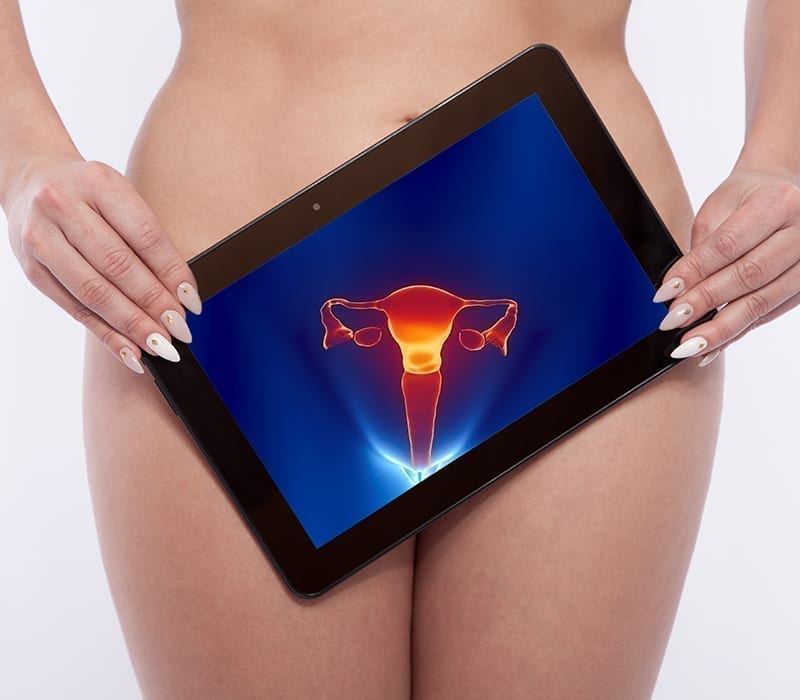Fibroids, endometriosis, chronic PID or severe period pain, the reason for a hysterectomy can vary depending on your age, health status and several other factors. The mere fact that if a woman has a hysterectomy, she will no longer have menstrual periods or be able to have a child, and will not need to use contraception scares most people. And this results in misinformation and delayed medical attention. So why is a hysterectomy done, what are the risk factors and how is it related to cancer?
TC46 asked Obstetrician & Gynaecologist Dr Sushma Tomar of Fortis Hospital, Mumbai some vital questions about having your uterus removed. Here, she talks about the factors that lead to a hysterectomy, the risks this procedure entail and its correlation with menopause.
1. What is a hysterectomy?
Hysterectomy is the surgical removal of the uterus for any pathology, chronic pain and infections. Depending on the pathology, the uterus and adjacent structures such as fallopian tubes, ovaries, and lymph nodes are removed. There are different types of hysterectomy, and it depends on the extent of removal.
- Total Hysterectomy: Removal of the entire uterus
- Subtotal Hysterectomy: Removal of body of the uterus, leaving behind Uterus mouth or Cervix
- Pan Hysterectomy: Removal of the uterus, both fallopian tubes and ovaries
- Extended Hysterectomy: Removal of the cuff of the vagina with pan hysterectomy
- Radical Hysterectomy: Extended hysterectomy with parametrium and lymph nodes of the cervix removal
2. What are some reasons your doctor may be recommending a hysterectomy?
There are different indications of hysterectomy based on non-malignant and malignant factors.
Non-Malignant indications are:
- Early and heavy bleeding (Dysfunctional Uterine Bleeding)
- Fibroid uterus
- Tubo ovarian mass
- Endometriosis and Adenomyosis
- Carcinoma in situ
- Endometrial hyperplasia
- Prolapse Uterus
- Chronic pelvic pain
Malignant indications are:
- Cancer of the cervix, ovary, endometrium or Choriocarcinoma
- Post-delivery severe bleeding
- Adherent placenta
- Ruptured uterus
- Septic abortion
3. What happens to your body when you have a hysterectomy?
When only the uterus is removed, there are no significant changes observed in the body. If both the ovaries are removed, then the patient develops menopausal symptoms. Hormonal Replacement Therapy is considered when both ovaries are removed.
Post-surgery, a patient may experience Urinary Tract Infection, vaginal bleeding, and constipation. In the long run, they may experience itching, vaginal discomfort, pain during sexual intercourse, anxiety and mood swings. Hysterectomy is a surgical procedure that impacts a women’s life emotionally. The menstrual cycle will stop and a female can’t experience pregnancy.
4. What are some alternatives to a hysterectomy?
The alternative depends on the indication of hysterectomy. If the size of the uterus is normal with profuse bleeding, one can consider Hysteroscopy Dilatation, Curettage, and Histopathology to rule out cancer.
A hormone-loaded Cu T can be inserted in Uterus. One can also undergo medical hormone treatment. In the case of malignancy, depending on the stage, chemotherapy and radiation can be considered. Even a smaller size fibroid which is asymptomatic can be treated.
Based on the patient evaluation, some of the alternative treatment can be:
Uterine Fibroid Embolisation (UFE): It’s a nonsurgical minimal invasive procedure performed by a radiologist to treat uterine fibroid. In this procedure a thin catheter is inserted into the artery at the groin or wrist, small spheres are injected through the catheter which blocks the arteries that supply blood to the fibroids. The blood supply is blocked off, the uterine fibroid(s) shrink and die.
Myomectomy: It is a surgical procedure to remove all types of fibroids. It can be performed in 3 different ways:
- Hysteroscopy: Removal of fibroids in the uterine cavity using a scope inserted into the uterus through the vagina and cervix
- Laparotomy: It is open surgery to remove fibroids. A gynaecologist makes a small incision in the abdomen and the uterus to remove the fibroids
- Laparoscopy: Two small cuts are made in the abdomen and then a laparoscope is inserted, it locates and then fibroids are dissected out
5. What are the risks of a hysterectomy?
The immediate risk can be bleeding, infection, injury to the urinary bladder, damage to the digestive tract, ureter and bowel complications. A medical complication may arise due to drug reactions or anaesthetic agents. Other rare complications are fluid overload or gas embolism. Post-operative complications might arise and due to excessive bleeding during surgery; the patient can go into a Hemorrhagic Shock. At times a patient develops urinary infection and retention.
6. What are the side-effects of having a total hysterectomy?
The side effects of total hysterectomy which a patient may face are:
- Damage to surrounding tissues like blood vessels, bladder, nerves
- Blood loss
- Vaginal discharge
- Loss of bone density
- Rapid heartbeat
- Vaginal vault prolapse
7. What is the correlation between cancer & hysterectomy? Can cervical or endometrial cancer be cured by having a hysterectomy?
Endometrial cancer can be cured by hysterectomy. Cervical cancer depends on stage Carcinoma in Situ, 1st and 2nd early-stage can go for Wertheim Hysterectomy. In the case of malignancy, depending on the stage, chemotherapy and radiation can be considered.
8. Can you opt for a Hysterectomy without a medical need for it? Is Hysterectomy used as a form of birth control?
Hysterectomy is never done without any medical indication or as a contraceptive.
9. What does a Hysterectomy procedure entail?
There are different ways to perform a hysterectomy, like Abdominal Hysterectomy, Vaginal Hysterectomy, and Laparoscopic Hysterectomy. Depending on the indication and surgeon’s expertise the procedure is shortlisted.
10. Will a hysterectomy lead to menopausal symptoms?
Women who will undergo this procedure will stop getting the periods. Whether a patient will face a few other menopausal symptoms depends on the surgery. During the surgery, if ovaries are not removed, it will make hormones therefore one can experience menopausal symptoms like hot flashes. If ovaries are removed, one will no longer have periods and you may experience menopausal symptoms immediately because hormone levels drop quickly without ovaries. The doctor can guide you about the ways and methods to manage the symptoms.
11. How does a hysterectomy impact the emotional wellbeing of a patient?

The surgery might trigger the following amongst females:
- Sadness
- Anxiety
- Relief, due to this surgery menstrual cycle stops therefore, a few women might experience relief
- Fear of ageing early due to experiencing early menopause
- Younger women may feel depressed
12. What does the recovery from a hysterectomy look like?
It takes around 6 to 8 weeks for complete recovery. Following tips can be useful for a better and smooth recovery:
- Early mobilisation with care
- Avoid lifting weights (heavy items)
- Keep stitches dry and clean
- Increase the intake of fibre and water
- Based on doctors advice include calcium and vitamin supplements
- Post hysterectomy abstinence
- Try to relax


